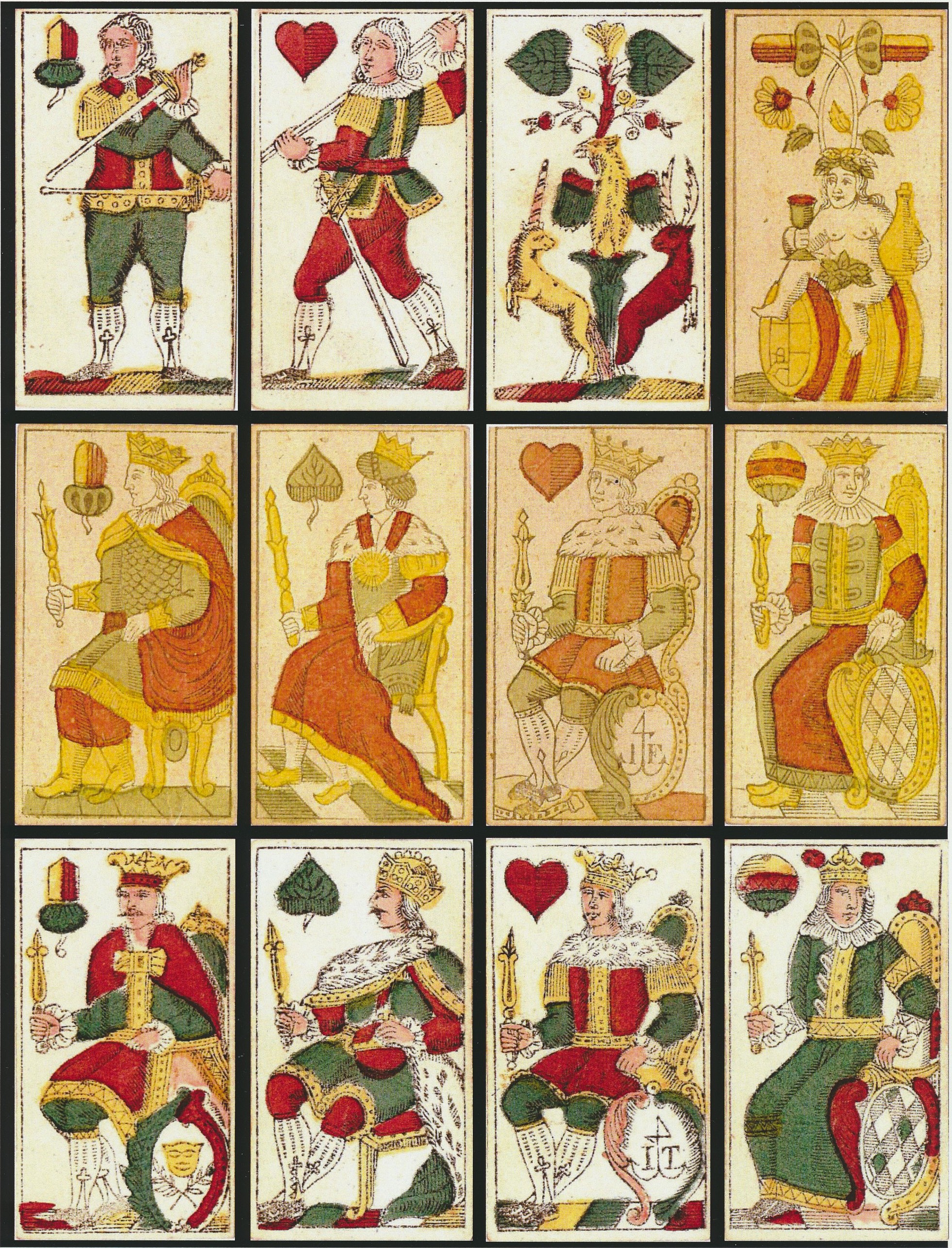

| Suit System: | G |
| Recommended name: | Bavarian "Isarkries" pattern |
In 1810 the newly established Kingdom of Bavaria was comparable to the Napoleonic Empire. It was divided into different government departments (Kreise), nine in total, named after the main river flowing through the respective area. The department of the Isar (Isarkreis) comprises the region around Munich and Landshut down to the rim of the Alps. At around the same time the Bavarian pattern [IPCS #54] was created in Munich and became, after short time, the new standard pattern of Bavaria instead of the Old Bavarian pattern [IPCS #53]. Since then the King of Bells has shown the Bavarian coat of arms at his throne. Fifteen years later, in parallel to the Bavarian pattern, a pattern arose in the department of the Isar (Isarkreis), first in Munich and later in Landshut, which was equivalent to the Bavarian pattern, except for three court cards, which are taken from the Old Bavarian pattern: Ober of Acorns, Ober of Hearts and Daus of Leaves. This “Isarkreis pattern” was present for around 45 years in this region. After 1870 it disappeared. It was the forerunner of the Salzburg pattern [IPCS #56] which came into being round about 1850 as a result of changing two cards and inserting the Salzburg coat of arms into the throne of the King of Bells. From this change the reminiscence of the “Isarkreis pattern” is alive today.
36 cards with German suits Acorns, Leaves, Hearts and Bells: Daus, King, Ober, Unter, ten to six.
Joseph Fetscher der Ältere, Munich; Joseph Fetscher der Jüngere, Munich; Joseph Hager, Munich; Cajetan Göbl der Jüngere, Munich; Ignatz Preisinger, Salzburg; Julius Tramitz, Landshut; Conrad Jegel, Nuremberg; Traugott Knaut, Weimar.
Hausler, Manfred: Das Bayerische Bild, Studien zur Spielkarte Nr. 4, Berlin 1993, p. 138ff; Hausler, Manfred: Ein Standardbild aus dem Bayerischen „Isarkreis“ und seine Verwandtschaft in Salzburg und Tirol, in: Das Blatt Nr. 36, Berlin 2007, p.16ff; Hausler, Manfred: Trommler und Pfeifer, Die Geschichte der Bayerischen Spiel-karten, München 2010, p. 123ff.

| The International Playing-Card Society | 03/2013 MH |